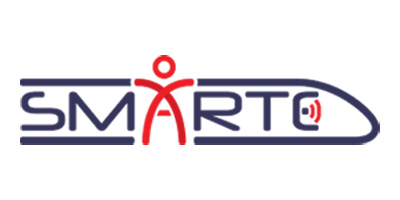RESEARCH
Discovering Structural and Computational Mechanics
PROJECTS


Project Acronym: SMaRTE
Project Title: Smart Maintenance and the Rail Traveller Experience
Responsible @ACMEC: António Andrade
Participants @IST: Jorge Ambrósio (ACMEC); Virginia Infante (ACPMME); Marta Gomes (DECivil)
Other partners: ULeeds (UK); UHuddersfield (UK); Fertagus (PT); FIT (I); UNIFE; ERGOPROJECT (I); UITP; ULulea (S); Flygteknik (S); Transport for London (UK);
Funding Institution: EU (Shif2Rail)
Project Reference: S2R-OC-CCA-01-2017
Funding: 84 k€(IST/IDMEC); 770 k€(Total)
Duration: 26 months starting September 2017
URL: http://www.smarte-rail.eu/
Summary:
SMaRTE brings together two related but distinct areas of research: i) smart maintenance and ii) human factors. Both are concerned with digitalization and the use of information to enhance decision making, either by industry players in respect of maintenance decisions, or by users of the system in employing smart applications to navigate the rail system and its interaction with other modes. In smart maintenance, it will: i) review and benchmark of current Condition-based Maintenance (CBM) practices in other sectors, namely the aeronautical sector; ii) develop and integrate a reliability ontology; iii) develop and integrate predictive tools for current and future condition of train passenger components; iv) develop optimization tools to support decision making and v) apply the CBM model to two real-world case studies on train passenger components. In Human Factors, it will: i) review demographical and societal factors affecting transport use, usability and attitudes towards transport; ii) realize an Experience Map project, which considers passengers as individuals behaving in the real context while performing the activities to reach their prefixed objectives; iii) Identify the physical and planning factors and their relative importance in the journey to identify the resistance at each step of the journey, broken down by demographic groups and mode/journey purpose; iv) estimate attrition factors for each activity in the journey, to quantify those potential customers lost at each step of the journey due to unfulfilled usability requirements; v) integrate the outcomes of the research into a vision and roadmap of measures to simplify the end-user experience of planning and undertaking a trip that includes a rail journey. The technology readiness level is TRL 2 or 3 (basic technology research and research to prove feasibility).
© Copyright 2020. All Rights Reserves.
Scientific Area of Structural and Computational Mechanics (ACMEC)



